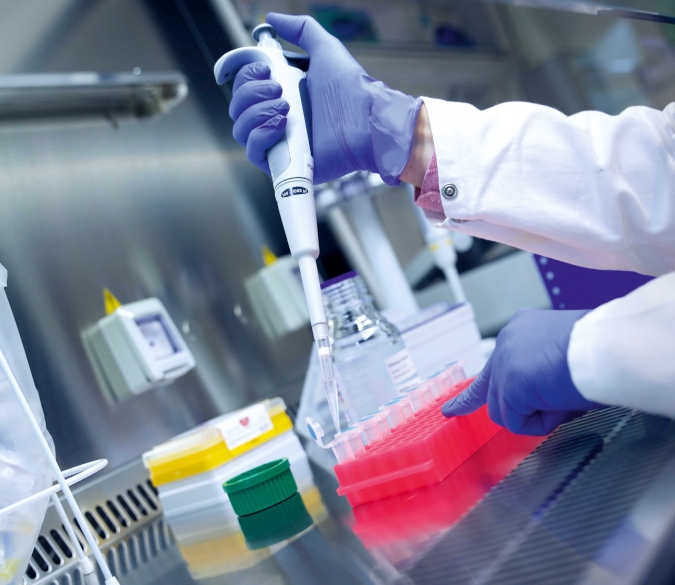Molecular Biology
Our molecular biological department – as a biosafety level 2 laboratory – offers a variety of up-to-date analytical methods.
Our motivated team will be pleased to support you in method development and method optimisation, validation/verification of methods in accordance with pharmacopoeias and ICH guidelines as well as in product-specific suitability tests of the test method and consult you on questions relating to your products or projects.

List of services: molecular biological department
Detection of biological contaminations e.g. for raw materials, medical devices, consumables, reagents or similar
- Detection of DNase/human and bacterial DNA
- Detection of RNase/human and bacterial RNA
- Detection of PCR inhibitors
- Detection of ATP and protease
- Detection of bacterial endotoxins by rFC test acc. to Ph. Eur. 2.6.32
- Detection of mycoplasma acc. to Ph. Eur. 2.6.7 and USP <63> by NAT method (nucleic amplification technique)
For further information please click here:
- Download Flyer Purity testing of consumables and reagents (in German only)
- Download Flyer Detection of bacterial endotoxins by rFC test
- Microbiological detection of bacterial endotoxins by means of LAL test (link to our microbiological department)
Analyses acc. to Ph. Eur. and USP in the current version or acc. to client request
- Fluorometric determination (DNA, ATP etc.)
- Photometric determination of proteins acc. to Ph. Eur. 2.5.33 and USP <1057> (Bradford, Lowry, BCA)
- Electrophoretic determination of nucleic acids and proteins (NAT method, SDS page, IEF)
- ELISA
- Host-cell proteins (HCP) acc. to Ph. Eur. 2.6.34 and USP <1132>
- Determination of host-cell DNA acc. to Ph. Eur. 2.6.35 and USP <1130>
Analyses acc. to Ph. Eur. and USP in the current version or acc. to client request
- Determination of biological activity (e.g. acc. to Ph. Eur. 2.7.5, monograph Ph. Eur., USP)
Analyses acc. to Ph. Eur. 2.2.47 and USP <1053> or acc. to client request
- Determination of identity and purity by CZE (capillary zone electrophoresis) or MEKC (micellar electrokinetic chromatography) method
- Determination of identity by means of CGE (capillary gel electrophoresis)
- Monograph methods for chiral purity, enantiomer separation, related substances, etc.
Analyses acc. to Ph. Eur. 2.2.56 and USP <1052> or acc. to client request
- Testing for ninhydrin positive substances and for ammonium
- Determination of the amino acid profile of peptides and proteins
- Identification of bacterial and fungal isolates by sequencing specific marker sequences (16S rRNA gene/ITS regions) and phylogenetic classification using a GMP-compliant database
- Relationship analyses between isolates of the same species by means of DNA fingerprints (comparisons of strains) to detect sources of contamination and trace contamination pathways
- Microbiological methods for identification of microorganisms possible (link to our microbiological department)
- Efficacy test (calcitonin salmon) acc. to USP in the current version
- Cell viability assays for the determination of cell activity (e.g. metabolic activity, specific enzymatic activity, cell membrane permeability, etc.) after exposure to an active substance
- Cytotoxicity
Contact the experts of our molecular biological department
The experts in our molecular biological department will be pleased to provide you with advice and support in planning and carrying out molecular biological tests for your products or projects. We will be pleased to prepare an offer tailored to your current issues.
Please use our contact form for your enquiry.
